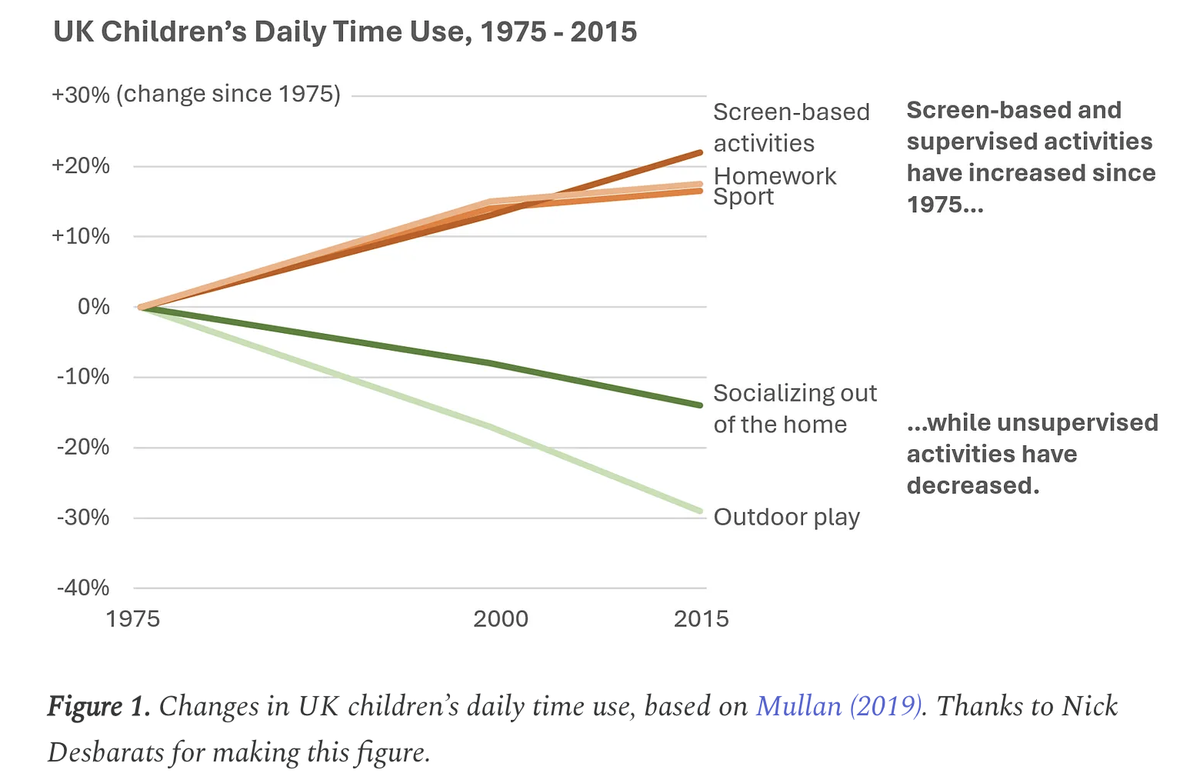Learning Aout Learning:

Why Children Need Risk, Fear, Excitement in Play:
Children today have far less unstructured outdoor play and freedom compared to previous generations.
Between 1975 and 2015, outdoor play among UK children decreased by 29.4%, while screen-based activities increased by 22.4%.
In the U.S., only 10% of children played outdoors daily by 2003, down from 16% in 1997.
Risky play, where children take physical risks and seek excitement, is crucial for child development. It allows them to develop physical skills, overcome fears, build critical thinking, and cope with uncertainty.
Anxious children in particular benefit, as risky play helps them tolerate ambiguity and interpret situations more positively.
Research shows children with more risky play opportunities have lower anxiety symptoms. However, risky play has been disappearing due to intensive parenting that began in the 1980s. Parents are encouraged to micro-manage children's lives, enroll them in structured activities, and remove any barriers. This approach is costly, exhausting, and has negligible benefits.
Many parents seem to worry about the wrong risks - children today are safer than ever, with injury-related deaths at an all-time low. But the strategies used to keep children safe, like maximizing supervision and minimizing freedom, are unintentionally increasing the likelihood of injuries.
To bring back risky play, children need more:
- Time for daily outdoor play
- Space for stimulating play environments with loose parts
- Freedom to play as they choose.
Research indicates parents must overcome their fears, work with neighbours, and take small steps to prioritise play and freedom in children's lives.
Every change begins with one manageable step to give children the freedom they need to thrive.
To find more tools to help bring back risky play and to learn more about Mariana's research, head to. OutsidePlay.org


